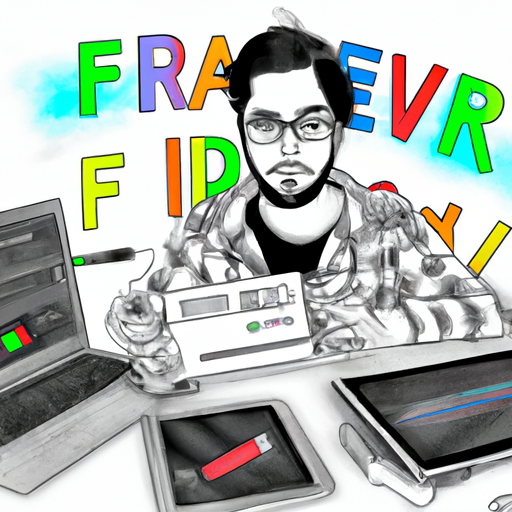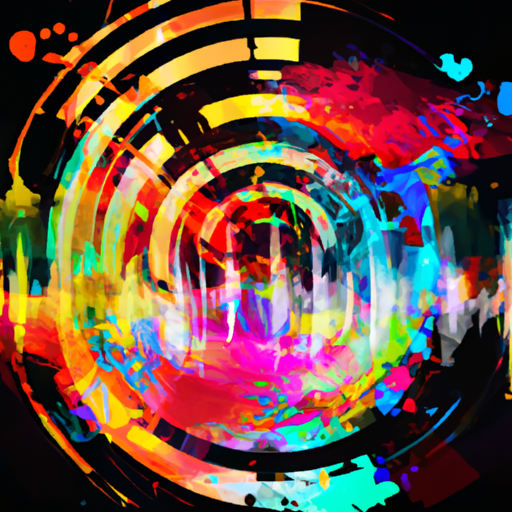This section explains the role of a UX/UI designer and their responsibilities, including user research and creating design concepts.
It emphasizes the importance of collaboration, problem solving, and creativity in this field. It also discusses two trendsfuture in UX/UI design user research and collaboration with cross-functional teams.
In today’s digital age, the role of a UX/UI designer has become increasingly crucial in creating user.-interfacesfriendly and visually appealing. From designing intuitive mockups to ensuring seamless user experiences, these professionals play a vital role in shaping the digital landscape.
In this article, we’ll delve into the routine of a UX/UI designer, exploringits daily tasks, the importance of collaboration and communication, the creative and problem-solving skills required in this field, and the future trends shaping the evolution. the role of UX/UI designers.
Whether you are a budding designer or simply curious about thisprofession, read on to gain insight into the fascinating world of UX/UI design.
-
- 1.Introduction Understanding the Role of a UX/UI Designer
-
- 2.Daily tasks Exploring the routine of a UX/UI designer
-
- 3.Collaboration and communication Key aspects of a UX/UI designer’s work
-
- 4.Problem solving andcreativity Unveiling skills needed in UX/UI Design
-
- 5.Future trends Insights into the evolving role of UX/UI designers
1. Introduction Understanding the role of a UX/UI designer
A UX/UI designer plays a crucial role in creating a seamless and delightful user experience for digital products.
They areresponsible for understanding user needs and behaviors and translating them into intuitive and visually appealing design. The role of a UX/UI designer encompasses a wide range of tasks and responsibilities that require a combination of technical skills, creativity and empathy.
Primarily, a UX/UI designer is responsible for conducting user research and gathering information about the target audience. This involves analyzing user behaviors, conducting interviews and surveys, and studying market trends.
Understanding the needs, preferences and pointsuser pain points, the designer can create designs that address these problems and provide a solution that meets their expectations.
Once the research phase is complete, the UX/UI Designer moves to the concept and ideation stage.Here, they brainstorm and develop different design concepts and ideas that align with the project goals and target audience.
This involves creating wireframes, mockups, and prototypes to visualize the design and collect feedback
2. Daily Tasks Exploring the Routine of a UX/UI Designer
The daily tasks of a UX/UI designer vary depending on the stage of the project they are working on.however, there are some basic activities that are usually part of their routine.
One of the main tasks of a UX/UI designer is to conduct user research. This involves understanding the target users, the needsand their behaviors.
Through interviews, surveys, and observations, the designer gathers valuable information that informs the design process. User research helps the designer create user personas, which are fictional representations of target users that guide design decisions.
Once the research phase is complete, the designer moves on to the information architecture phase. Here, they organize and structure the content and functionality of the product or website.
This involves creating wireframes, which are simple sketches orwireframes that outline the basic structure of the interface. Wireframes help the designer and stakeholders visualize the flow and hierarchy of the user interface.
After the information architecture is defined, the UX/UI designer focuses on creatingvisual design.I use various
3. Collaboration and communication Key aspects of a UX/UI designer’s work
Collaboration and communication aretwo essential aspects of a UX/UI designer’s work. These skills are crucial to ensure the success of a project and the satisfaction of all stakeholders involved.
One of the main responsibilities of a UX/UI designer is to workclosely with the client or project manager to understand the goals, requirements, and target audience.
This collaborative process allows the designer to gather all the information and insights needed to create a user-centered design.
In addition, collaboration extends beyond working with the customer alone. This helps create a common understanding among team members and ensures that everyone is on
4. Resolvingproblem solving and creativity Uncovering the skills needed in UX/UI design
In the field of UX/UI design, problem solving and creativity are two essential skills that professionals rely on every day.
The role of a UX/UI designer revolves aroundaround understanding user needs and creating intuitive and visually appealing interfaces to enhance the user experience.
To achieve this, designers must possess a unique blend of problem-solving skills and creative thinking.
First, problem solving skills are essential for UX/UI designers as they encounter various challenges throughout the design process.
These challenges can range from addressing usability issues to finding innovative solutions forcomplex user interactions. Designers must possess a deep understanding of user psychology and behavior to identify pain points and develop effective solutions.
Additionally, problem-solving skills involve conducting researchand extensive analytics to gather user insights and identify design gaps. UX/UI designers must be proficient in user research techniques such as interviews, surveys, and usability testing to collect relevant data.
Analyzingwith this data, designers can discover user needs and pain points, leading to the development of user-centered design solutions.
5. Future Trends Insights into the Evolving Role of UX/UI Designers
As technology continues to advance at a rapid pace, the role of UX/UI designers is evolving, also to keep up with the changing needs and demands of users.Here are some future trends shaping the role of UX/UI designers
1.Emphasis on user research UX/UI designers are now emphasizinggreater emphasis on user research to gain a deeper understanding of user behaviors, needs and motivations.
This helps them create more intuitive and user-centric designs that meet the specific requirements of their target audience. By conducting user interviews, surveys andusability tests, designers can gather valuable information to inform their design decisions.
2.Design Thinking and Collaboration Design thinking, a human-centered approach to problem solving, is becoming increasinglypopular in the field of UX/UI design. Designers now work closely with cross-functional teams, including product managers, developers, and marketers, to co-create solutions that meet both user needs and business goals. Collaboration and interdisciplinary teamwork arecritical to driving innovation and delivering exceptional user experiences.
In conclusion, the role of a UX/UI designer is multi-faceted and crucial in the field of digital design. As explored in this article,the daily tasks of a UX/UI designer involve a combination of technical skills, creativity, problem solving and effective communication.
Collaboration with other team members is another key aspect of their work as they strive to create user-friendly digital experiences andvisually appealing.
Additionally, future trends in UX/UI design point to a continued evolution of the role, with advances in technology and user expectations driving the need for designers to stay current and adaptable.
In general, the role of a UX/UI designerUI is dynamic and ever-evolving, making it an exciting and rewarding profession for those passionate about creating exceptional user experiences in the digital world.
….






